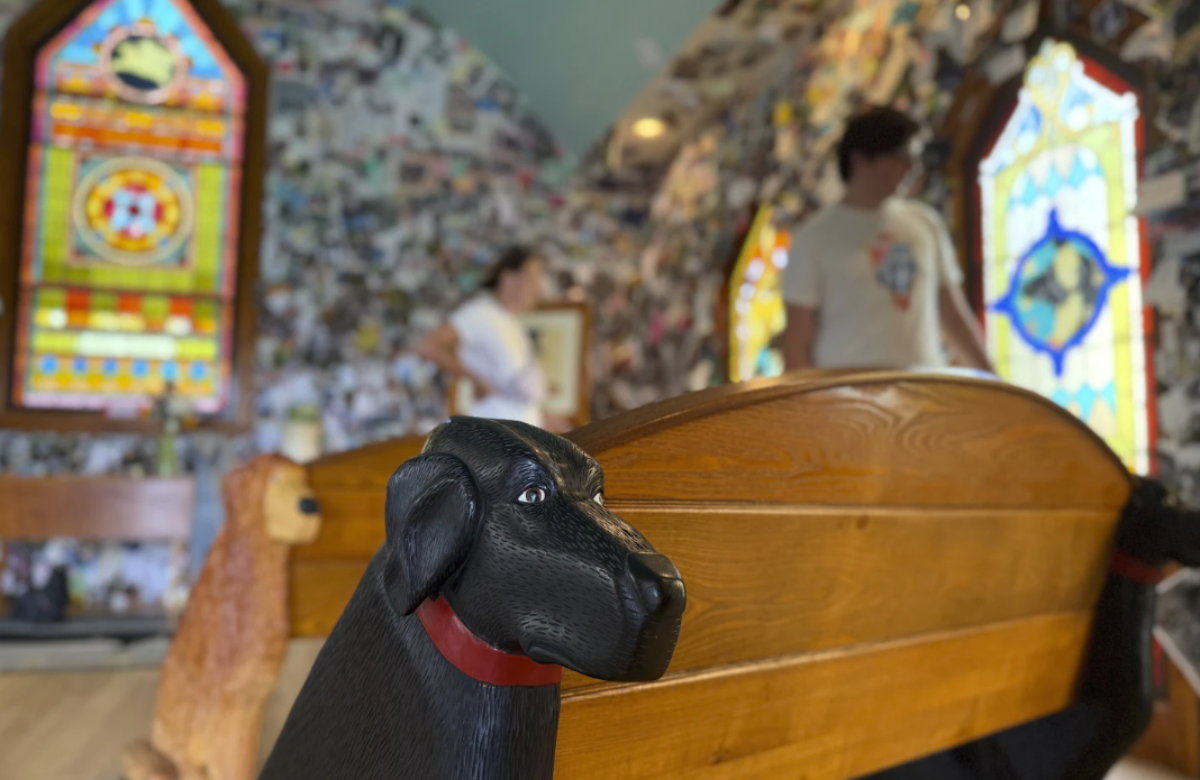Japanese contemporary artist Takashi Murakami continues to blur the boundaries of artistic media, spanning everything from large-scale paintings and sculptures to high-fashion collaborations and music album covers. His latest endeavor brings his vibrant and emotionally layered work to the Cleveland Museum of Art in a major new exhibition opening Sunday.
Titled Takashi Murakami: Stepping on the Tail of a Rainbow, the exhibition is an expanded version of a previous show first staged in Los Angeles. It features more than 100 works that range in tone and form but are united by themes exploring how trauma shapes culture.
Murakami, instantly recognizable for his iconic smiling flower motif, often blends playful visuals with serious historical undertones. This contrast, he explains, is deliberate — using cheerful imagery to invite deeper reflection on darker themes rooted in Japanese and global history.
Curator Ed Schad, who helped organize the original show at The Broad in Los Angeles, said the pieces reflect how a society processes hardship. “These portraits tell us about the state of a society — its emotional health, its collective response to events,” Schad noted. “What emerges from Murakami’s work is a dialogue with trauma.”
One of the standout pieces, Pom and Me, is a sculpture that presents Murakami and his dog with their bodies split in half — one side rendered anatomically, the other in their familiar outer appearances. The piece reflects Murakami’s experience of navigating Western art culture through the lens of his Japanese identity.
A large wall in the exhibit is dedicated to a grid of square portraits of cartoon-like flowers, each with expressive faces ranging from sorrow to glee to eerie. They’re arranged by background color, forming a rainbow across the wall. Some smile innocently, while others shed tears, bleed, or stare in astonishment — all revealing a range of emotional states beneath the surface.
While the artworks don’t explicitly depict specific events, they are meant to be viewed in the context of three significant moments in Japan’s modern history: the atomic bombings of Hiroshima and Nagasaki in World War II, the 2011 Tōhoku earthquake and subsequent Fukushima nuclear disaster, and the global impact of the COVID-19 pandemic.
Murakami acknowledges that his art is sometimes perceived as light or childlike — a misreading he’s willing to accept. “That’s one of my tricks,” he said. “Something a child might enjoy in my work is often very different from what an adult sees.”
Before reaching the main exhibit hall, visitors pass through a reimagined version of the Yumedono, an octagonal structure inspired by a sacred hall at Horyuji Temple in Nara, Japan. Murakami said the design was influenced by the 2024 TV adaptation of Shōgun, which reignited his interest in historical Japanese architecture.
Inside this structure are four new paintings created between 2023 and 2025: Blue Dragon Kyoto, Vermillion Bird Kyoto, White Tiger Kyoto, and Black Tortoise Kyoto. These works expand on Murakami’s fusion of mythology, history, and contemporary pop aesthetics.
The ticketed exhibit runs at the Cleveland Museum of Art through early September, offering viewers a chance to step into Murakami’s colorful yet deeply introspective world.















